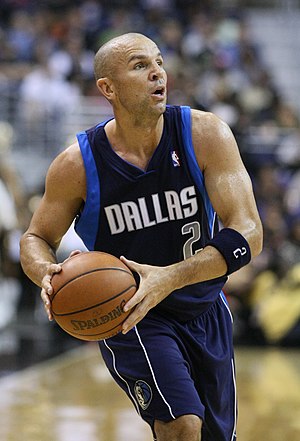 The last time a Canadian team won the Stanley Cup was in 1993: the Montreal Canadiens. Since then, hockey’s Holy Grail has had 18 years of living south of the border, far away from it’s historical home. It has taken residence in New York, Detroit, and Chicago, all relatively acceptable as they were in the “Original Six”. But it has also made an appearance in Tampa Bay, Carolina, and Anaheim, locales that are probably more worthy of football than hockey.
The last time a Canadian team won the Stanley Cup was in 1993: the Montreal Canadiens. Since then, hockey’s Holy Grail has had 18 years of living south of the border, far away from it’s historical home. It has taken residence in New York, Detroit, and Chicago, all relatively acceptable as they were in the “Original Six”. But it has also made an appearance in Tampa Bay, Carolina, and Anaheim, locales that are probably more worthy of football than hockey.
Speaking of the Original Six, I will be the first to admit: when I was a kid, I used to be a fan of the Boston Bruins. That was back in an era when they won their last Stanley Cup – 1972. Those were the days of the Phil Esposito, Derek Sanderson, Wayne Cashman, Bobby Orr, and Gerry Cheevers.
Fast forward to 2011. The Bruins were in the Stanley Cup Final, looking for their first win since 1972. Their opponent this year was the Vancouver Canucks, owners of the league’s best record in the regular season. It was an epic series, going to a Game 7 finale. But if you are a Canadian waiting for the Cup to head north once again, the wait will last at least one more year.
 Effective treatment should be more than just throwing a bunch of interventions at the wall and hoping that one of them sticks. It should consist of an evidence-based intervention defined by a sound clinical reasoning process.
Effective treatment should be more than just throwing a bunch of interventions at the wall and hoping that one of them sticks. It should consist of an evidence-based intervention defined by a sound clinical reasoning process.
Clinical reasoning skills are as important as (if not more than) patient handling skills or manual techniques or clinical prediction rules. But “learning how to think” isn’t typically a college course, and the task of acquiring these skills is typically under-appreciated in both the practicing clinician and student clinician. Why spend time learning how to think when I need to spend time learning how to do?
Clinicians will often neglect the impact of their beliefs on their clinical reasoning skills. It is terribly easy to introduce a number of errors into the clinical reasoning process, and in doing so, create a situation in which “logic” and “evidence” fight a battle with “anecdote” and “beliefs”. This in turn severely limits the clinician’s ability to formulate clear hypotheses, consistent mechanical and medical diagnoses, and evidence-based treatment interventions.
 I will admit, I had my doubts. Sure, the Dallas Mavericks were in the NBA Finals. But could they actually win it? There had been plenty of years of “one and done”, and this team was much older than the one that went to the 2006 Finals.
I will admit, I had my doubts. Sure, the Dallas Mavericks were in the NBA Finals. But could they actually win it? There had been plenty of years of “one and done”, and this team was much older than the one that went to the 2006 Finals.
You knew that something had to be a little different this year when Mavericks owner Mark Cuban fell silent throughout the playoffs. Either things were about to change, or the end of the world was upon us.
We now know that it was the former. The Dallas Mavericks are the 2011 NBA Champions. They can also now say that they have won their first NBA title.
Prior to last night, there was not one NBA ring to be found on this team. Veterans? Thirty-eight year-old Jason Kidd was in season 17 – but he kept coming back like the “last” season of “Lost”.
But this team was not lost at all. They reminded us that it in an era of huge contracts and little team (or fan base) loyalty, playing as a team is still the most important aspect of a team sport. And the reminder came in the most obvious way as they were up against perhaps the best team of solo players around – the Miami Heat.
 It has become a reality in the political arena, regardless of the issue – be it the environment, immigration, or health care. There is always an 800 pound gorilla in the room that nobody wants to talk about for any number of reasons. Taking a hard line with the gorilla - “playing hardball”, if you will – can be a perilous task indeed.
It has become a reality in the political arena, regardless of the issue – be it the environment, immigration, or health care. There is always an 800 pound gorilla in the room that nobody wants to talk about for any number of reasons. Taking a hard line with the gorilla - “playing hardball”, if you will – can be a perilous task indeed.
It is pretty tough to play hardball with that 800 pound gorilla in the room. The gorilla has a strong fastball, throws a great curve, and has lots of power behind it. It has a cute smile, that gorilla, just before it decides to tear your head off.
The health care system has historically had physicians in the role of “gatekeepers”, in which the physician directs all care for the patient. But the health care world is changing. Patients want access to care, and they want to do so with any number of providers. They want direct access to chiropractors, advanced nurse practitioners, and physical therapists, among others.
Enter the 800 pound Direct Access gorilla, known as the American Medical Association, and it’s Scope Of Practice Partnership. George Orwell would be proud: if you are a non-physician health care provider, Big Brother is watching your every move.
 Who turned on the heat in Austin these days? We’ve already gone past the 100 degree mark, and we’re barely into the first week of June. I know that there is much debate about global climate change, but in my limited experience on the planet, I would say that something is awry.
Who turned on the heat in Austin these days? We’ve already gone past the 100 degree mark, and we’re barely into the first week of June. I know that there is much debate about global climate change, but in my limited experience on the planet, I would say that something is awry.
This episode of the Ruminations deals with heat, and plenty of it.
1. The US Grand Prix has a new home in Austin, and now it has a tentative date on the F1 calendar – June 17, 2012. June in Austin can be pretty hot (see above), but it should be business as usual for the teams. They go to plenty of hot climates already – Bahrain and Abu Dhabi being two examples.
Historically, the US and Canadian events have been a week apart for some degree of travel convenience for the teams. Many years ago, they were in September and October. That sounds like a great time frame for a race in Austin, though it might be a little tenuous weather-wise in Montreal.
The FIA has a lot of scheduling issues to contend with as far as the US GP is concerned. Perhaps one of the biggest scheduling concerns is not the heat but, yes, you guessed it, the University of Texas.
 The numbers are a little staggering. Eighty percent of the population will eventually suffer from non-specific low back pain. Most of those people will have back pain that presents with no apparent mechanism of injury.
The numbers are a little staggering. Eighty percent of the population will eventually suffer from non-specific low back pain. Most of those people will have back pain that presents with no apparent mechanism of injury.
The reality of most clinical practice guidelines for the treatment of low back pain is pretty simple – don’t do the things that aggravate it, do the things that make it feel better, stay active, and do not take any more than a couple of days of bed rest (if any). Though that doesn’t appear to be any sort of rocket science, the majority of the research on low back pain leads us to these simple conclusions.
Wouldn’t it be great if there was a solution that would be successful with a large number of people, provide consistent results, and focus on self care strategies? Better yet, let’s make that solution cost-effective as well, if at all possible.
How does a $29.99 solution sound to you?
With this in mind, let’s look at three simple strategies and principles that can be used on a daily basis to decrease low back pain.
 In my last post, I discussed how the bell curve could put a lot of training myths and fallacies to rest. But if you think that the outliers dominate training and fitness, wait until you look at their effect on health care.
In my last post, I discussed how the bell curve could put a lot of training myths and fallacies to rest. But if you think that the outliers dominate training and fitness, wait until you look at their effect on health care.
In health care, and most certainly in the sports medicine world, clinicians continue to believe that symmetry and alignment are critical in the discussion of injury rehabilitation and prevention. In the same breath, there are countless clinicians (be they physical therapists, chiropractors, massage therapists or physicians) that go on to describe biomechanical mal-alignments and “imbalances”, and then spend their lives trying to treat patients that present with these “syndromes”. In their minds, it is obvious: that which is not symmetrical must in fact be a cause of your _____ pain (insert any typical musculoskeletal complaint here).
I never cease to be amazed that the human species has survived thousands of years with the scourge of the dreaded biomechanical mal-alignment. Wow. It is hard to believe how we, as a species, could ever survive a quarter inch difference in leg length as we ran through the jungle, or how we didn’t die of neck pain given that one shoulder was higher than the other.
 "Running Injuries: Etiology And Recovery- Based Treatment" (co-author Bridget Clark, PT) appears in the third edition and fourth editions of "Clinical Orthopaedic Rehabilitation: A Team Approach" by Charles Giangarra, MD and Robert C. Manske, PT.
"Running Injuries: Etiology And Recovery- Based Treatment" (co-author Bridget Clark, PT) appears in the third edition and fourth editions of "Clinical Orthopaedic Rehabilitation: A Team Approach" by Charles Giangarra, MD and Robert C. Manske, PT.
 Allan Besselink, PT, DPT, Ph.D., Dip.MDT has a unique voice in the world of sports, education, and health care. Read more about Allan here.
Allan Besselink, PT, DPT, Ph.D., Dip.MDT has a unique voice in the world of sports, education, and health care. Read more about Allan here.
 Top 5 finalist in three categories: "Best Overall Blog", "Best PT Blog" and "Best Advocacy Blog".
Top 5 finalist in three categories: "Best Overall Blog", "Best PT Blog" and "Best Advocacy Blog".